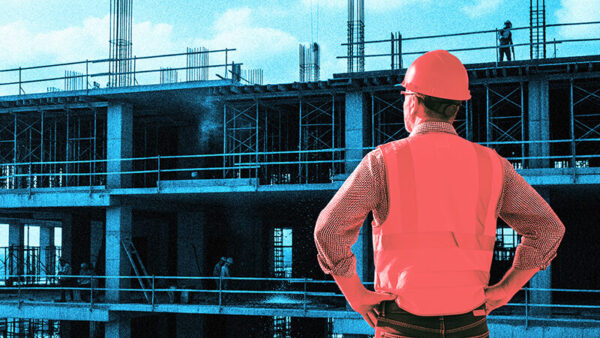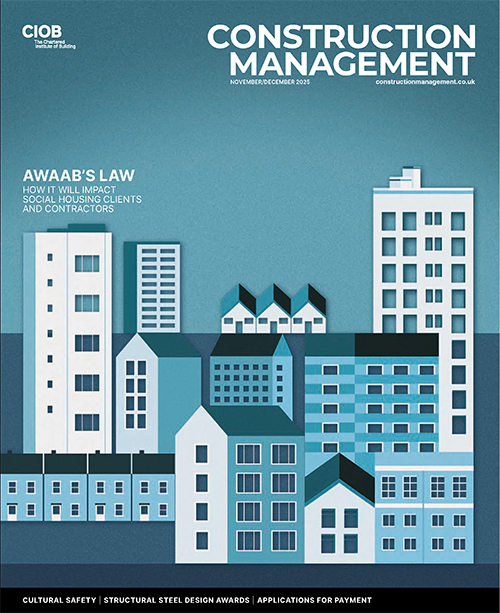Simon Lewis and Michelle Essen review key points of the government’s consultation on its proposals for the reform of the construction products regime.

The government’s proposals for construction products reform have been unveiled in its Construction Products Reform Green Paper.
Change has been long-anticipated and long-awaited, driven by the Grenfell fire and the subsequent Hackitt Review, Morrell-Day Review and Grenfell Inquiry Phase 2 report.
This 158-page Green Paper lays out the enormous complexity of our current system and the largescale changes proposed to transform the industry. It also poses 58 questions to industry stakeholders, with consultation responses due back by 21 May 2025.
In the meantime, here are some highlights.
The case for change
The first part of the Green Paper explains why we need change, including:
- An overview of how the UK construction products sector and regulatory regime work, and how it fits with the EU framework;
- Explaining who’s who, useful if you don’t know your CABs from your TABs (conformity assessment bodies and technical assessment bodies);
- A reminder that “two-thirds of construction products on the UK market are not covered within the construction products regulatory regime”.
It also highlights sector groups the government considers critical to delivering reform. One of these is “the construction industry and supply chains”, including clients, funders, contractors, subcontractors, designers, specifiers, developers, manufacturers, distributors, importers, marketers, installers and insurers.
The changes proposed
The second part of the Green Paper delves into the proposed reforms, such as:
Mirroring EU change
Potentially reflecting the EU’s current reforms to its construction products regime, which is important as “the EU is the UK’s largest trading partner for construction products” and the UK’s regime “is assimilated (retained) EU law”.
The EU wants manufacturers to provide safety information on construction products and tell national authorities when a non-conforming product poses a risk to health and safety. It’s also improving market surveillance and enforcement, introducing digital product passports, bringing reused and recycled products into scope, and requiring manufacturers to share installation and environmental information.
Establishing a general safety requirement, plus greater requirements for critical products
All construction products would be brought within the regulatory regime. They could be classified as critical to safe construction; covered by a designated standard or subject to a technical assessment; or not covered by a designated standard or subject to a technical assessment.
There would be different requirements for each, but products that aren’t currently covered by construction products regulations could become subject to a “risk-based general safety requirement”.
Furthermore, products critical to safe construction “where there is a risk of serious harm if something goes wrong” (potentially wall systems and fire doors) could face additional requirements, such as approved installer schemes or prescribed competency requirements.
Clear accessible information
The document asks “what test information is necessary to facilitate appropriate selection, safe installation, and to demonstrate [manufacturer’s] claims?”. It also suggests a construction library for test results, mandatory information, fire safety reports and academic reports. Digital labelling and digital product passports and traceability are also mentioned.
On product marking, the CE mark would still be recognised and, depending on the product type, it considers whether to retain the UKCA mark, use digital labelling or a UK government mark.
Reviewing testing and conformity assessment
Ensuring “strong accountability across the testing and certification landscape, and sufficient oversight”. While CABs, TABs, UKAS and the BSI are mentioned, the government adds: “We believe there is an argument to expand public testing capacity.”
Better oversight and surveillance
Reviewing the various regulatory authorities’ roles and how they should work together. Also considering more effective surveillance through integrated reporting and intelligence sharing, and “powers to require the production of information, to purchase and seize products, and to proactively sample and test products”.
Stronger enforcement
Where economic operators contravene their obligations, the government is “exploring whether this should be a criminal offence that is punishable by an unlimited fine, imprisonment, or both” and whether non-compliance with enforcement action should be a criminal offence. It also considers expanding liability for an offence so “employers are vicariously liable for the misconduct of their employees … individuals directing the behaviour of a company [e.g. directors] are liable for contravention of obligations …[and] liability extending to associated companies [e.g. parent companies]”.
The national regulator could issue improvement notices, recover its enforcement action costs, and issue civil monetary penalties. In the worst cases, regulatory authorities could “suspend or prohibit supply across multiple products from the same manufacturer”. And where individuals are “convicted of serious offences related to construction products, such as gross negligence manslaughter, the national regulator could prevent them from working in the industry”.
The government also seeks feedback on the industry’s experience of bringing claims against construction product manufacturers.
Improved sustainability
This aligns with both the EU’s reform and the government’s net-zero ambitions. On top of the EU’s changes, the government is considering making software available so manufacturers and others can calculate lifecycle environmental impacts, a deposit-refund system, manufacturers providing spare parts and a reused products database.
Whatever happens, brace for change
The Green Paper is out for consultation, and the government will need to weigh the responses and formulate its proposals further.
But the case for change is undeniable and, after years of waiting, the path forward is now clearer as the Green Paper paves the way for regulatory reform. And while the government acknowledges that businesses will require an appropriate grace period, it also recognises that “the need to start the journey to reform is urgent”.
Simon Lewis is partner and Michelle Essen legal director at Womble Bond Dickinson.











